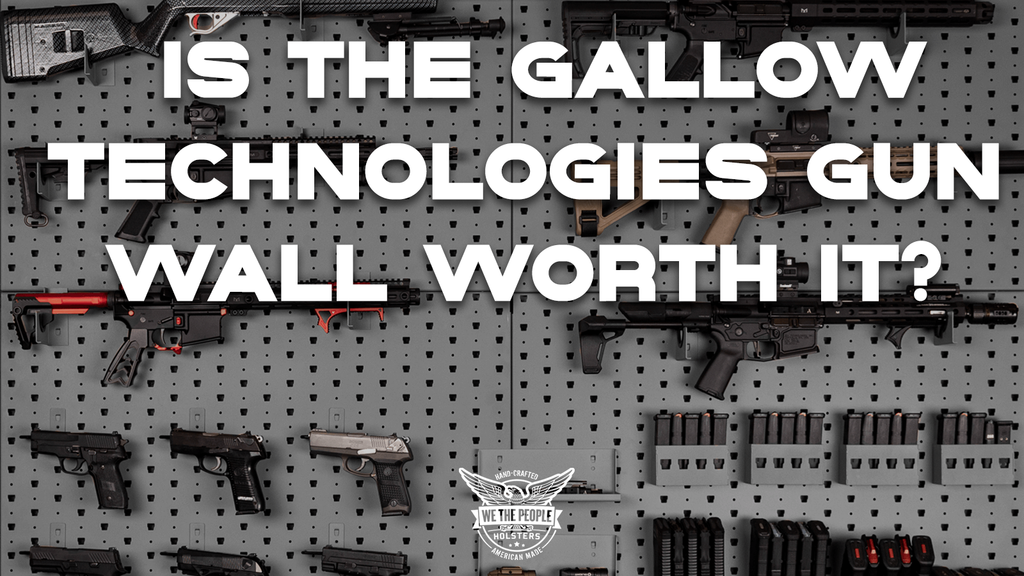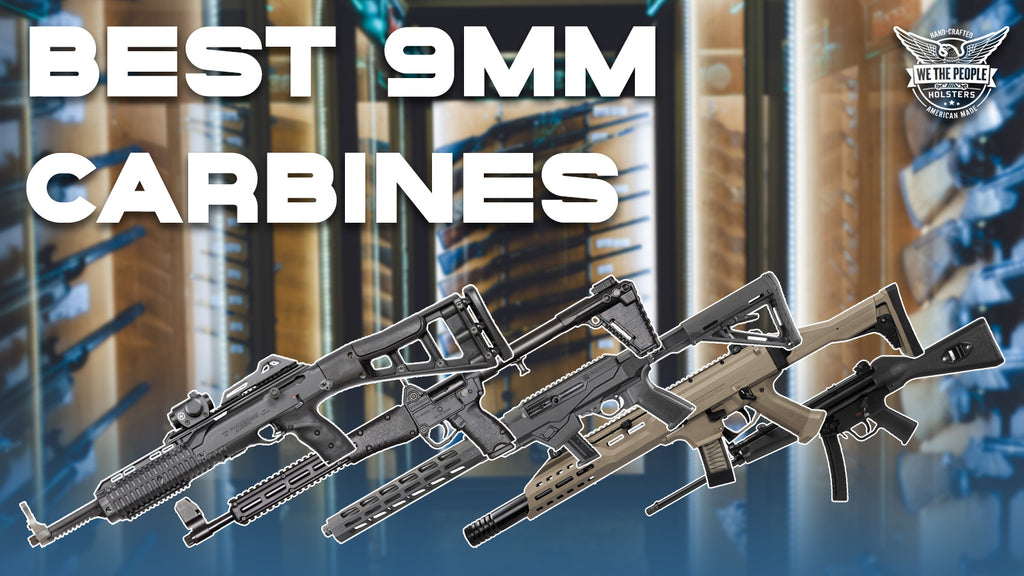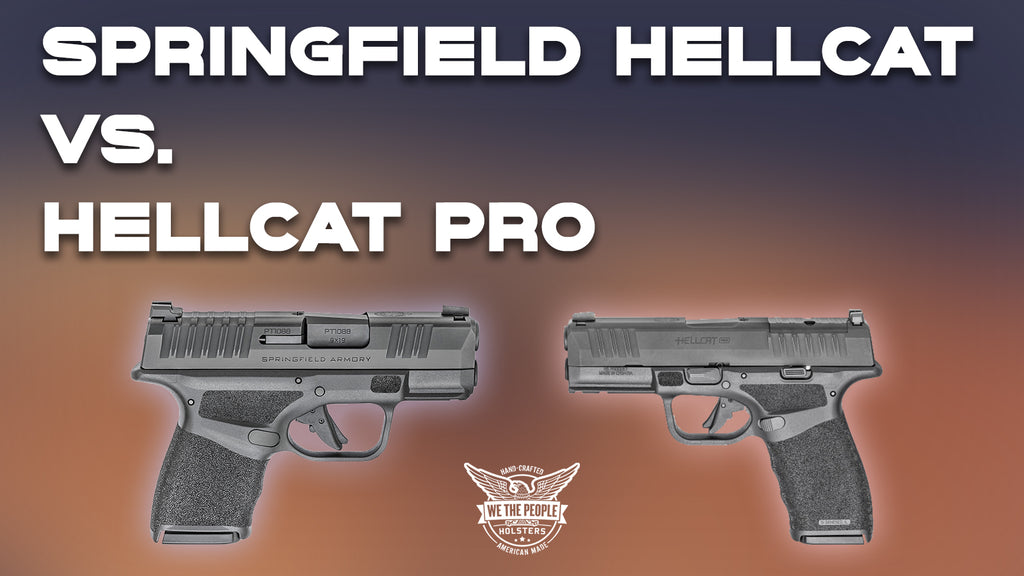Every year, firearms technology continues progressing and offering ever more efficient concealed carry semi-automatic pistols, offering iterative improvements on concealability, capacity, ergonomics, and compatibility with accessories. Yet, despite these advances, many legally-armed citizens still prefer carrying the humble revolver.
Here’s why the revolver continues to be a popular alternative to modern semi-autos, the characteristics of good concealed-carry revolvers, and which CCW revolvers sold today are the best in class.
Why a Revolver for Concealed Carry?

The era of less-than-adequate .25 or .32-caliber “mouse gun” pistols is no more. Many compact semi-automatic options are available on today’s market, featuring proven self-defense calibers, standard magazine capacities ranging from 6 to over 10, and easy to reload (swapping magazines can be done in seconds).
Semi-autos appear to offer so many advantages that choosing a revolver for your concealed carrying needs may, at first glance, seem like a strange or outdated choice.
However, there are many reasons to opt for the classic wheel gun instead of a modern semi-auto. The revolver has endured alongside the semi-automatic pistol due to three primary factors: reliability, versatility, and simplicity of use.
-
Reliability
Although semi-automatics have come a long way, revolvers are mechanically simpler than semi-auto pistols, naturally lending them more reliability. Even the most reliable semi-autos still have an ejection port and magazines, which can fail and cause malfunctions, typically rendering it unable to fire until remediation (e.g., tap, rack, bang).
Revolvers have neither, so neither can fail. For instance, if pulling the trigger doesn’t result in a bang, you can simply pull the trigger again to align the next chamber with the barrel.
-
Versatility
All modern self-defense handgun cartridges are available in various projectile types, such as full-metal jacketed (FMJ) for training and practice and jacketed hollow point (JHP) for personal defense.
While a modern semi-automatic can typically accept most ammunition in its chambering, it may not shoot all of them accurately or reliably. For instance, cartridges with light powder loads may not have the energy to cycle the action reliably, and unconventional projectile shapes may cause malfunctions.
With a revolver, the general principle is much simpler: if it fits and is the correct chambering, it should fire. Revolvers can fire ammunition loaded with bullets as light or heavy as you need with the same reliability, regardless of the projectile’s length or shape (as long as it doesn’t exceed the chamber’s length).
In addition, many revolvers are compatible with two or more cartridges, further expanding your ammunition choices. For example, .357 Magnum is simply an elongated version of .38 Special, meaning that a .357 Magnum revolver will also accept and safely fire .38 Special ammunition.
-
Simple to Use
There’s no denying that when using a semi-automatic pistol, even models with as few controls as possible (e.g., Glock pistols), the shooter must learn multiple operations to safely and competently shoot one.
Besides the trigger and the sights, all semi-autos require the shooter to learn to load and unload magazines, use the magazine release button, and remember to check for a round in the chamber (especially when unloading).
Many handguns include additional controls on top of the basics, such as safety levers and decockers, the proper use of which must also be learned, lengthening the time required to become proficient.
In contrast, a modern double-action revolver is consistently simple to operate safely. By design, revolvers do not feature safety levers, magazines, or decockers. Some models don’t even feature visible hammers, leaving the trigger and the cylinder release latch as the only controls.
There is no extra round in the chamber to remember, as the cylinder holds all of the gun’s chambers. You can also easily visually confirm which rounds have been fired by inspecting the cartridges for primer dents.
It is very challenging to fire a double-action revolver accidentally. Unless you cock the hammer or deliberately pull it all the way, the natural weight of a DA trigger prevents accidental discharges, making it inherently safe.
What to Look for in a Quality CCW Revolver
Revolvers designed for concealed carrying tend to feature specific elements and characteristics to make them more efficient carry pieces. Here are the essential features to look for when shopping for a CCW revolver.
-
Barrel Length
The primary trait defining a revolver’s suitability for concealed carrying is the barrel length, which most influences the gun’s overall length and, in turn, its concealability.
Concealed carry revolvers tend to be on the shorter side, typically fitted with 1.5 to 3-inch barrels, or what shooters call “snub-nosed.”
In contrast, revolvers with longer barrels (4-inch barrels and beyond) are typically older law enforcement duty guns or target shooting guns that aren’t as easily concealed as their shorter counterparts.
-
Ergonomics
Classic short-barreled revolvers came with simple, thin wooden grips which were uncomfortable to shoot, especially on revolvers with more powerful chamberings.
In contrast, many modern home defense and concealed carrying wheel guns feature ergonomic rubberized grips, offering more surface area for your hands and a more comfortable feel and texture.
Look for revolvers fitted with this type of grips to get the most out of your CCW revolver, as they will help you hold your handgun more comfortably and reduce or eliminate hand pain when practicing.
-
Chambering

No matter what caliber your revolver shoots, you must remember that the shorter the barrel, the more noticeable the recoil becomes. This principle is the primary tradeoff of concealed-carry revolvers and is one reason you should carefully consider your gun’s chambering.
While choosing a magnum caliber such as .357 Magnum may be tempting, the shorter barrel will generate more recoil, making it more painful to shoot and rendering accurate follow-up shots more challenging.
Additionally, magnum cartridges are designed to perform optimally with longer barrels (4 to 6 inches). You will not benefit from their full performance using a snub-nosed barrel.
Instead, consider less powerful cartridges that are easier to control, such as .38 Special +P or .44 Special. You can also find revolvers that accept semi-automatic pistol cartridges, such as 9mm or .45 ACP.
-
Sighting System
Regarding sighting systems on concealed carrying revolvers, each approach has its own pros and cons. The best choice here depends on your experience and personal preferences.
Traditional snub-nose revolvers often featured little more than a rear notch and a front blade sight, minimizing the risk of snagging when drawing the pistol from a pocket but making it more challenging to shoot.
Although this style of iron sights still exists, many other models take the opposite approach, offering fully adjustable sights with high-visibility fiber optic or tritium dots. These sights are easier to shoot accurately or tune for your ammunition but present a higher risk of snagging.
The Top 5 Concealed Carry Revolvers Today
Are you looking for suggestions on which carry revolver to pick? Here are the top five CCW revolver models available today.
-
Smith & Wesson Model 66 Combat Magnum

The Model 66 Combat Magnum is a concealed-carrying version of the classic Model 66 K-Frame revolver, in production since 1971. Although production was temporarily discontinued in 2003, Smith & Wesson revived this classic revolver in 2014, bringing it up to modern standards and keeping it in the catalog since.
This revolver accepts up to 6 rounds of .357 Magnum or .38 Special, featuring a stainless steel frame and 2.75” barrel, a classic Smith & Wesson DA/SA action, and a black molded synthetic grip.
Although this handgun is on the heavy side, the Model 66 is designed to withstand the power and recoil of .357 Magnum, making it one of the most durable concealed carry guns for shooters using .357 or .38 +P self-defense ammunition.
Specifications (2.75” barrel version):
-
Caliber: .357 Magnum / .38 Special +P
-
Capacity: 6 rounds
-
Action: DA/SA
-
Sights: Rear adjustable, front ramp
-
Overall length: 7.8”
-
Barrel length: 2.75”
-
Weight: 33.5 oz.
-
Ruger LCR .327 Federal Magnum

The .327 Federal Magnum cartridge is an unconventional cartridge that first entered the market in 2007. Despite a relatively slow start, the cartridge has recently experienced a resurgence as manufacturers introduced new, highly reliable, and concealable revolvers compatible with it, such as the Ruger LCR .327.
Although the LCR is an established name in the world of concealed-carrying revolvers, with over a decade of presence on the market, the .327 version combines the gun’s well-known traits with a cartridge full of potential for CCW applications.
If you are unfamiliar with the Ruger LCR, it is one of the world’s lightest self-defense revolvers. It is well-known for employing a monolithic aluminum frame, a stainless steel cylinder, and a grip and trigger group housing made of polymers. The lightweight materials and 1.87” barrel result in a firearm weighing less than 20 ounces, making it easy to conceal carry.
The .327 Federal Magnum cartridge is a lengthened version of the obsolete .32 H&R Magnum cartridge, offering near-.357 Magnum performance with a thinner cartridge. The cartridge’s dimensions allow for an extra round in the cylinder compared to a .357 or .38 equivalent. In the LCR’s case, you get six shots of .327 instead of five.
Specifications:
-
Caliber: .327 Federal Magnum
-
Capacity: 6 rounds
-
Action: DAO
-
Sights: Rear notch, front ramp
-
Overall length: 6.5”
-
Barrel length: 1.87”
-
Weight: 17 oz.
-
Charter Arms Undercover

The Undercover was the first revolver produced by the Connecticut-based Charter Arms Company since its foundation in 1964.
At the time of its introduction, the Undercover featured a highly innovative design, with few moving parts and a high-strength one-piece frame made of stainless steel capable of handling heavier loads without prematurely wearing out.
Although the company has since expanded its catalog and modernized many of its classic offerings, the Undercover has remained in production, in large part due to its popularity with civilians and law enforcement officers seeking a small, concealable revolver.
If you’re looking for a 100% US-made lightweight revolver chambered in .38 Special and capable of accepting high-pressure +P loads, the modern-production version of the Charter Arms Undercover may be the ideal choice for you.
Specifications:
-
Caliber: .38 Special +P
-
Capacity: 5 rounds
-
Action: DA/SA
-
Sights: Rear notch, front Patridge
-
Overall length: 6.75”
-
Barrel length: 2”
-
Weight: 16 oz.
-
Rock Island Armory M206

Manufactured in the Philippines by well-known 1911 pistol maker Armscor, the M206 is sold in the United States under the Rock Island Armory brand name.
The M206 is not based on existing designs from Colt, Ruger, Smith & Wesson, or any other prominent revolver manufacturer. This 100% original design resembles many of the classic revolvers made during the 1950s and 1960s, with a blued steel frame and barrel, fixed sights, and a pair of old-style thin wooden grips.
The M206 is available as either a standard DA/SA or a DAO revolver and accepts up to 6 rounds of .38 Special. Note that this revolver is not +P rated, meaning you should only load standard-pressure ammunition. Despite that, the M206 is an excellent low-cost handgun, ideal for shooters on a budget or people who want a safe first investment into concealable revolvers.
Specifications:
-
Caliber: .38 Special (not +P rated)
-
Capacity: 6 rounds
-
Action: DA/SA or DAO
-
Sights: Rear notch, front blade
-
Overall length: 6.85”
-
Barrel length: 2”
-
Weight: 25.5 oz.
-
Ruger GP100 .44 Special

Although .44 Special may not be the first choice for most people looking to conceal-carry a revolver, there are two primary reasons to consider this big-bore cartridge for self-defense. It is a big-bore cartridge with recoil and stopping power approximately equivalent to .45 ACP and the availability of heavy, high-quality self-defense ammunition, ranging in weight between 200 and 240 grains.
If the .44 Special sounds like the self-defense revolver cartridge for you, you may want to consider the Ruger GP100 in .44 Special. Ruger originally built this revolver platform to handle heavy .357 Magnum loads, granting it exceptional durability.
Although the GP100’s durable construction makes it fairly heavy, even with the short 3” barrel (36 oz. unloaded), the weight can be an advantage, as it helps tame the already mild recoil of most .44 Special ammunition. This combination of handgun and cartridge will let you keep the sights on target and make the most of your 5-shot cylinder.
Specifications:
-
Caliber: .44 Special
-
Capacity: 5 rounds
-
Action: DA/SA
-
Sights: Rear adjustable, front fiber optic
-
Overall length: 8.5”
-
Barrel length: 3”
-
Weight: 36 oz.
Carry Your Favorite Revolver in a High-Quality Holster

At We The People Holsters, we aim to provide 100% American-made holsters for Second Amendment enthusiasts, no matter the make and model of their favorite handguns. We offer a selection of IWB and OWB holsters compatible with numerous pistols and revolvers, handcrafted in the United States using quality materials. Browse our selection today.




